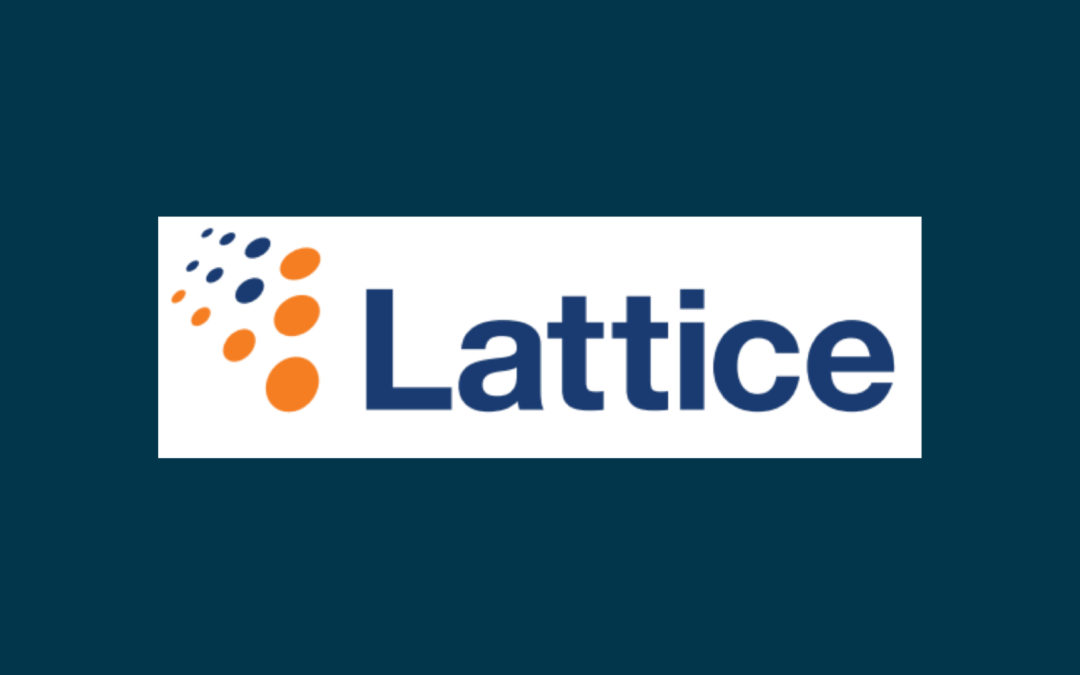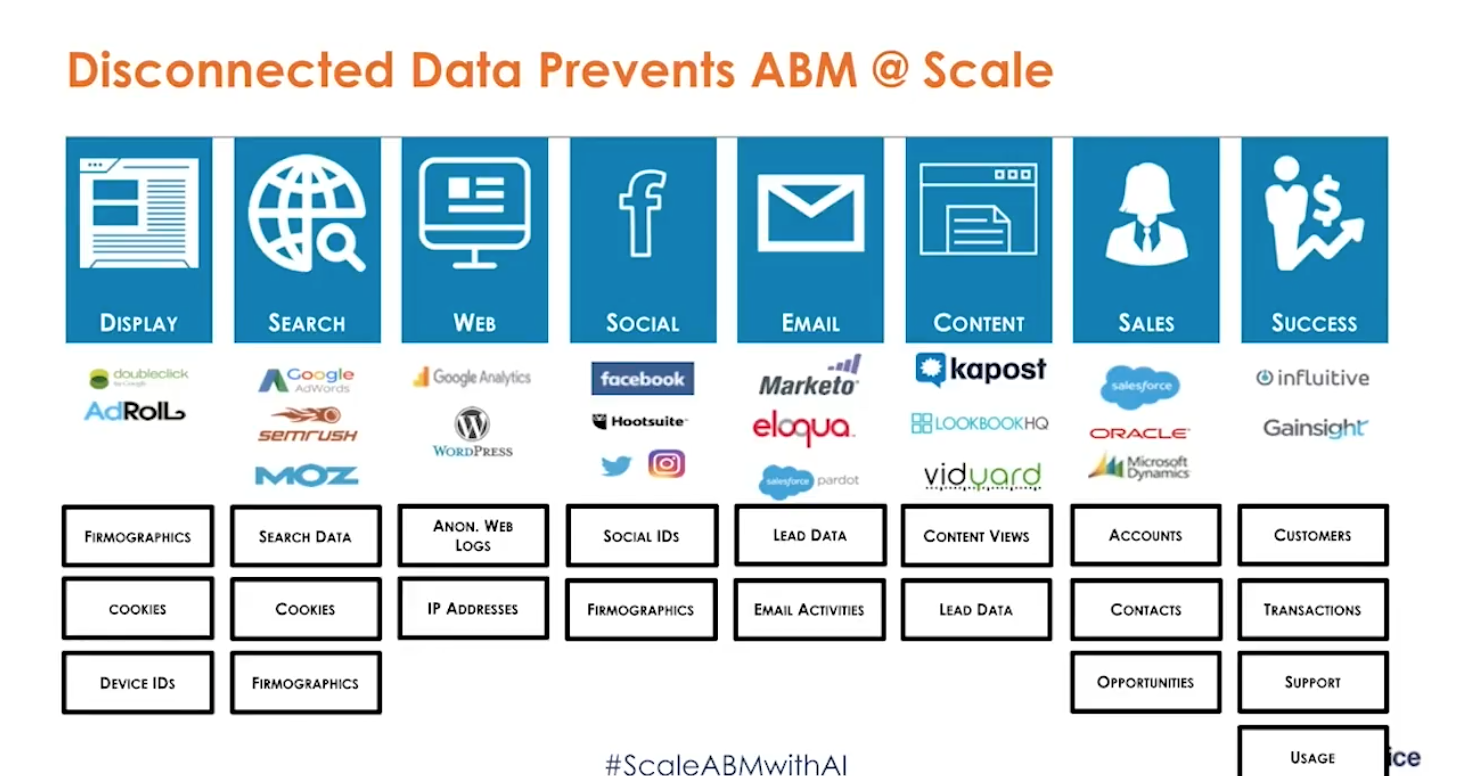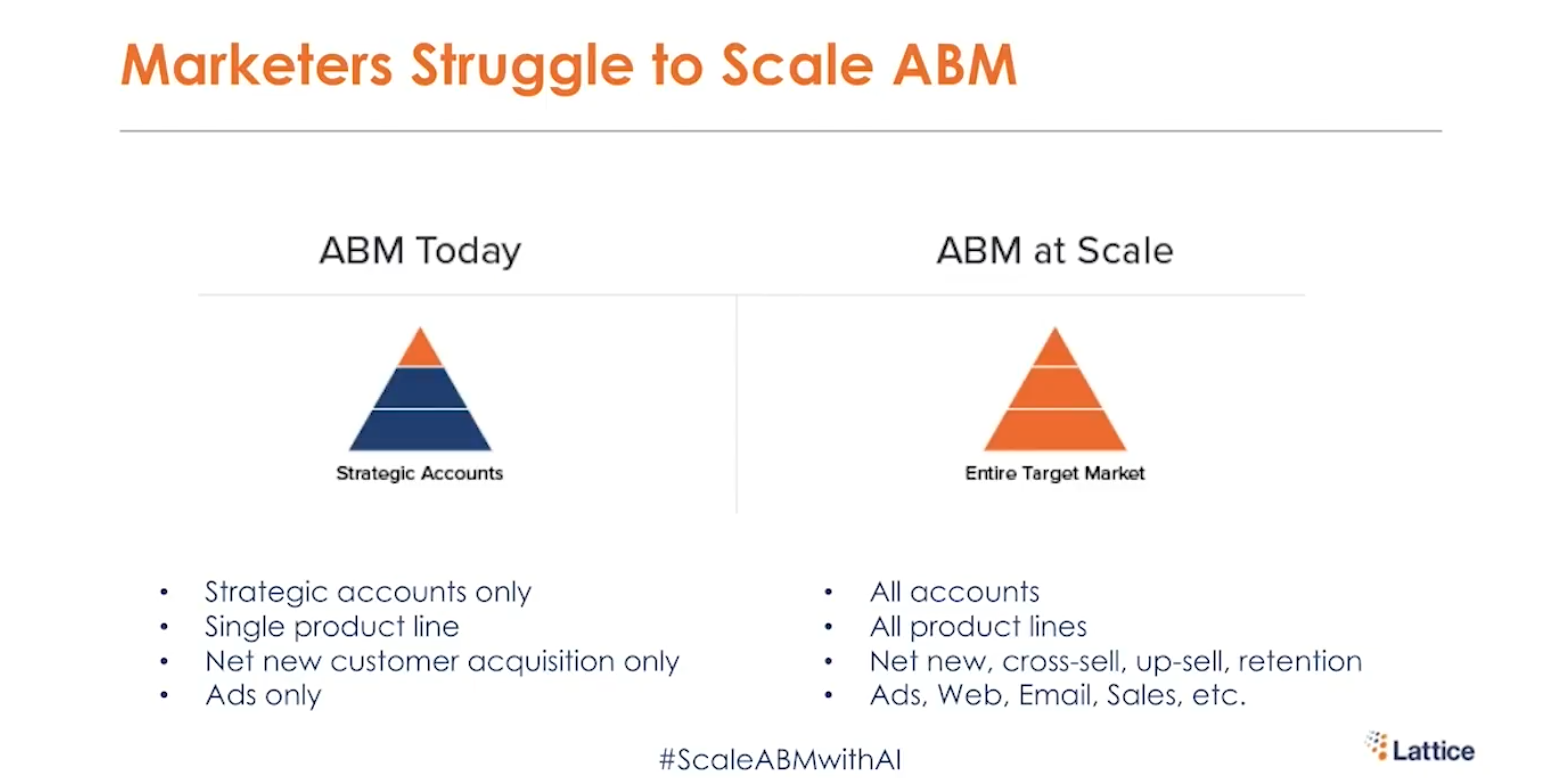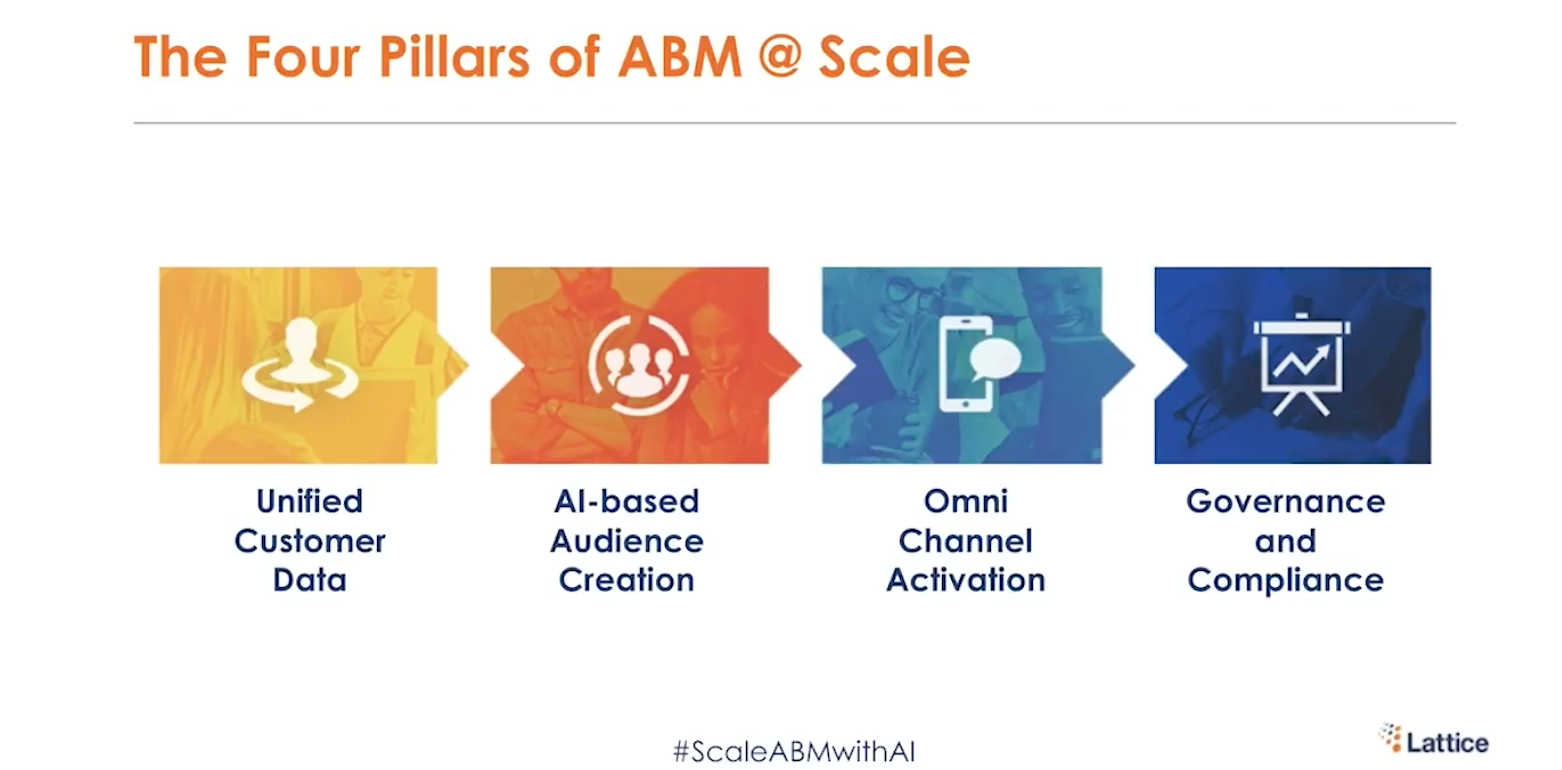While Account-based Marketing (ABM) is far from new, it continues to grow in popularity and is being adopted by more and more B2B companies. ABM has proven quite successful for those who have chosen to use it on a strategic level (one-to-one ABM). However, taking the strategic aspect of ABM and doing it at scale has proven to be a challenge. So, how can ABM be used for a larger market? How can ABM be performed at scale?
Lattice Engine’s VP of Marketing, Nipul Chokshi, was able to address these questions in his presentation Scaling ABM with AI: Three Real-Life Example of Success for the 2018 AI Growth Summit. Here’s some of the insights he shared.
Seeing the advantages of ABM
B2B companies are seeing the advantages of adopting ABM. In fact, the statistics shared by Nipul Chokshi during his presentation show that ABM adoption is becoming more and more prominent..
- 90% of marketers believe that ABM is critical
- 61% of marketers are going beyond pilot
- 53% of marketers have a dedicated budget for ABM
These stats show that ABM is an important strategy to marketers. Not only that, well over half of ABM programmes have gone beyond the pilot stage, illustrating that marketers have seen success. Additionally, with budgets being dedicated to ABM, marketers are getting buy-in from management as well.
The challenge comes at scale
With all the positives about ABM, there are challenges. Chokshi quotes a statistic that says only one in five companies are seeing sales and marketing effectiveness from their ABM strategy. The challenge has been to do ABM at scale. To make it work for larger markets or a company’s entire market.
The cause of this challenge is that of disconnect data across multiple channels. With the different channels and engagement technologies all having their own set of data and metrics, it results in a fragmented experience for the end-users. Different messages being sent depending on the channel can turn buyers off of a brand.
Lattice Engine’s four pillars of ABM at scale
The answer to successful ABM at scale is through the use of data and AI. Lattice Engine break the process into four pillars. The process enables companies to engage with buyers in a consistent way.
The first pillar is to unify customer data. Aggregating all the different data from the different channels enables a comprehensive view of the customer. From that point companies are using all the data from sources such as CRM, marketing automation, transaction and intent data as well as others to create audiences. AI is able to manage all the data to make recommendations.
The audiences are then activated across channels. This needs to be coordinated in timing and sequences and across all teams in the process.
The last pillar focuses on what companies do with the customer data they have access to. They need to treat it with care and responsibly. It must be kept secure and follow with compliance requirements such as GDPR.
Want to know more?
Would you like to hear more? Are you interested in hearing three examples of real-life examples of how AI has assisted with ABM at scale? You can listen to the presentation here.





Recent Comments